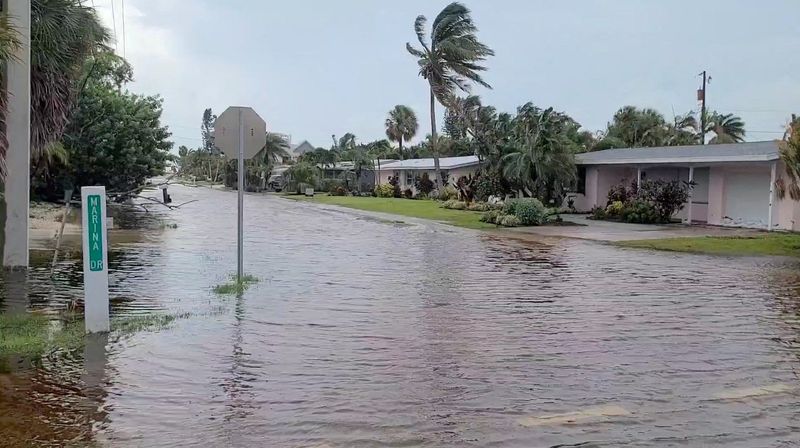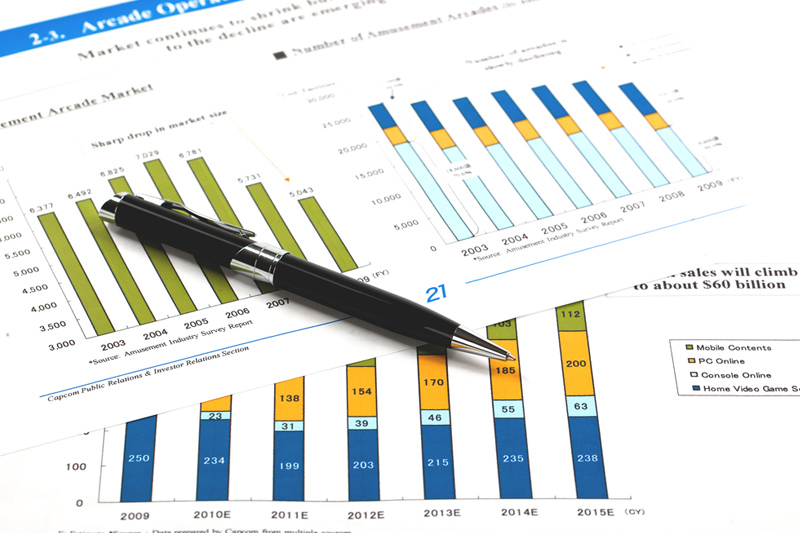By Maria Alejandra Cardona
STEINHATCHEE, Florida (Reuters) -Tropical Storm Debby drenched northern Florida on Monday, killing several people as the downgraded hurricane barreled toward Georgia and the Carolinas, threatening a week of heavy rains and flooding across the region.
The slow-moving storm barreled into Florida’s Gulf Coast around 7 a.m. (11 a.m. GMT) Monday morning as a Category 1 hurricane and made landfall near Steinhatchee, about 70 miles (115 kilometers) southeast of Tallahassee, the National Hurricane Center said.
The storm packed hurricane force winds of up to 80 miles per hour when it struck in the Big Bend region — where the state’s panhandle meets the main north-south peninsula — but its speed ebbed as Debby pushed overland.
Trees felled during the storm killed a 12-year-old girl and a 13-year-old boy in Levy County, officials and law enforcement officials said. A 19-year-old man was killed near Valdosta, Georgia, when a tree fell on a porch, police said.
Others who died in the storm included a truck driver who lost control of an 18-wheeler on Interstate 75 and veered into the Tampa Bypass Canal, and a 38-year-old woman and her 12-year-old son whose SUV crashed in Dixie County. north of Tampa in stormy weather, police said.
About 150,000 customers were without power in Florida on Monday evening, down from a peak of 350,000, according to Poweroutage.us, and flight trackers showed hundreds of flights in and out of Florida airports were canceled on Monday.
Vice President Kamala Harris has postponed a campaign stop scheduled for this week in Savannah, Georgia, the Savannah Morning News reported.
More than 500 people were rescued Monday from floodwaters from homes and vehicles in Sarasota, Florida, police said, and about 180 people were rescued in Manatee County, officials said.
The hurricane center said Debby would cross Georgia and move offshore into the Atlantic Ocean by Tuesday evening, then strengthen again and make a second landfall, likely in South Carolina near Charleston.
The storm was near the Florida-Georgia border late Monday, about 37 miles west of Brunswick (NYSE:), Georgia, and was moving northeast at 7 miles per hour with sustained winds of 75 miles per hour. and higher gusts, the hurricane center said.
The center is forecasting “catastrophic flooding,” with some areas along the Atlantic coast receiving 20 to 30 inches (76 cm) of rain Friday morning. The governors of Georgia, South Carolina and North Carolina declared a state of emergency pending Debby’s damage.
According to local weather reports, Debby had already dropped eight to six inches of rain in some parts of central Florida by late Monday afternoon.
“This is going to be an event that will happen here probably over the next five to seven days, maybe 10 days, depending on how much rain we get,” said Kevin Guthrie, executive director of the Florida Division of Emergency Management.
Officials in Georgia and South Carolina are bracing for flooding.
“It may be the most water we’ve seen in a long time,” South Carolina Gov. Henry McMaster said at a briefing. “There may be flooding in areas that have never flooded in the past.”
Savannah Mayor Van Johnson said the city can expect “once in a thousand years” rain.
“This will literally create islands in the city,” Johnson said.
DRINKING SLOWLY
A slow moving tropical storm that passed over Cuba. Debby was strengthened by exceptionally warm Gulf waters as they paralleled Florida’s Gulf Coast on Sunday.
Debby shows some characteristics of Hurricane Harvey, which hit Corpus Christi, Texas, in August 2017. Harvey was downgraded to a tropical storm as it moved inland and lingered over Texas, dumping about 60 inches of rain on Houston and causing $125 billion in damage. .
Climate scientists believe that man-made global warming from the burning of fossil fuels has increased the temperature of the oceans, making storms bigger and more destructive.
The last hurricane to make a direct hit in the Big Bend region was Hurricane Idalia, which briefly gained Category 4 strength before making landfall as a Category 3 in August 2023, with winds exceeding 120 miles per hour. The National Centers for Environmental Information estimates the damage at $3.5 billion. Florida Governor Ron DeSantis described Debby’s initial effects as “modest” compared to Idalia.

Forecasters expect numerous Atlantic hurricanes, including four to seven major ones, in the 2024 season, which began June 1. That would surpass the record-breaking season of 2005, which produced the devastating Hurricanes Katrina and Rita.
Only one other hurricane, Beryl, has formed in the Atlantic Ocean this year. The earliest Category 5 storm on record struck the Caribbean and Mexico’s Yucatán Peninsula before rolling up the Texas Gulf Coast as a Category 1 storm, packing sustained winds of up to 90 miles per hour.


